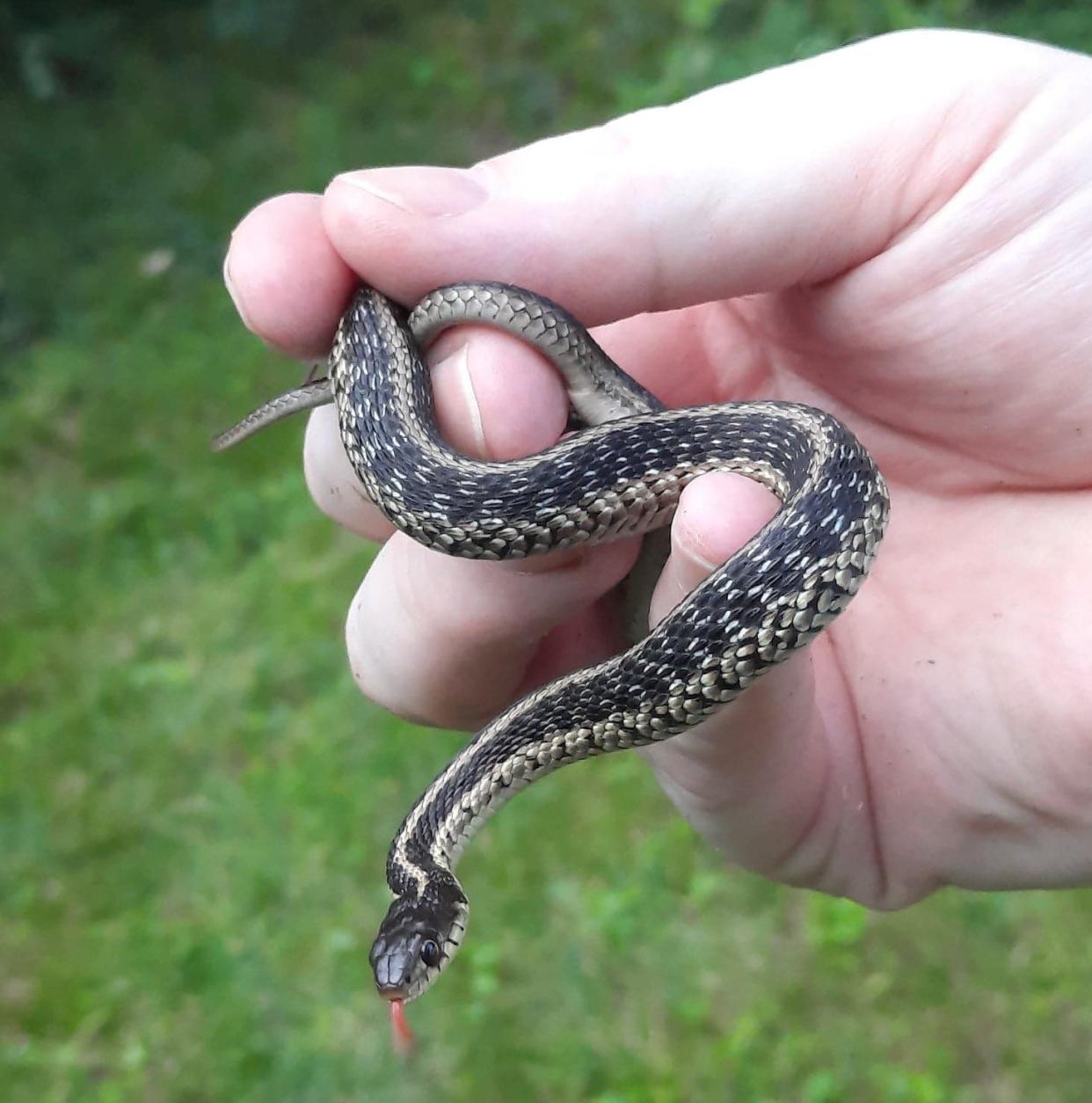Cambridge native helps with breeding program for endangered snake

An abrupt U-turn happened this summer when Ohio Northern University biology professor Katheryn Krynak was taking a road trip during one of her rare days off work. The reason: Momma snake was giving birth. Granted, a snake in labor isn’t usually cause for such a sudden change in human plans, but in this case the snake in question is a member of a species that’s been listed as endangered in Ohio since 1974. In fact, the only Plains Garter Snake colonies that live in the wild in the Buckeye State are located at Kildeer Plains Wildlife Area (KPWA) in Wyandot and Marion counties. Ohio’s captive Plains Garter Snakes, which are part of breeding programs to increase the population, reside at the Columbus Zoo, where the species’ first captive breeding program began in 1999, at Cleveland Metroparks Zoo and now at Ohio Northern University. With licensing from and coordination with the Ohio Department of Natural Resources, and with funding from the Getty College Opportunity Grant and endowed chair dollars, ONU’s Thamnophis radix Captive Breeding Program was established in May with three male snakes and one hefty female, whom Krynak hoped was already pregnant (hence the heft) but wasn’t sure until she got the phone call. When conditions are favorable, Krynak will release the babies at KPWA in coordination with the zoos and herpetologist Doug Wynn. Wynn, a world-renowned snake researcher, has been monitoring the snakes at KPWA since the late 1970s and the population will continue to be monitored and studied. This fall, Krynak is being assisted in her snake-saving work by three enthusiastic students majoring in environmental and field biology − including senior Haley Goehring. Goehring, from Cambridge, is responsible for snake care and for parasite screenings. “Examining parasites that the snakes may have helps to ensure that we keep them healthy for their release,” she said, adding she thinks this work will make her a more competitive candidate for graduate school and future jobs. Her interest leans toward working with and researching wildlife, particularly amphibians and reptiles. The importance of nature conservation is top of mind for Goehring. “With so many species becoming extinct it is crucial to preserve our native plants and animals for their own sake and for the sake of the environment as a whole,” she says. “The environment relies on the complex and incredibly intertwined interactions between all organisms to function properly, so it is incredibly important to preserve our native biodiversity.” Krynak notes that in her experience, the Plains Garter Snake is typically docile and shy. According to Krynak, two primary culprits are to blame for Ohio’s decimated Plains Garter Snake numbers, habitat loss and, more recently, a fungal pathogen. These snakes inhabit wetland meadows, many of which have long been transformed into agricultural land. Some other factors that have been negatively impacting the species include particular land management strategies such as controlled burns and mowing, practices that have been altered at KPWA.
Contributed by Ohio Northern University.
This article originally appeared on The Daily Jeffersonian: Cambridge native helps with breeding program for endangered snake

